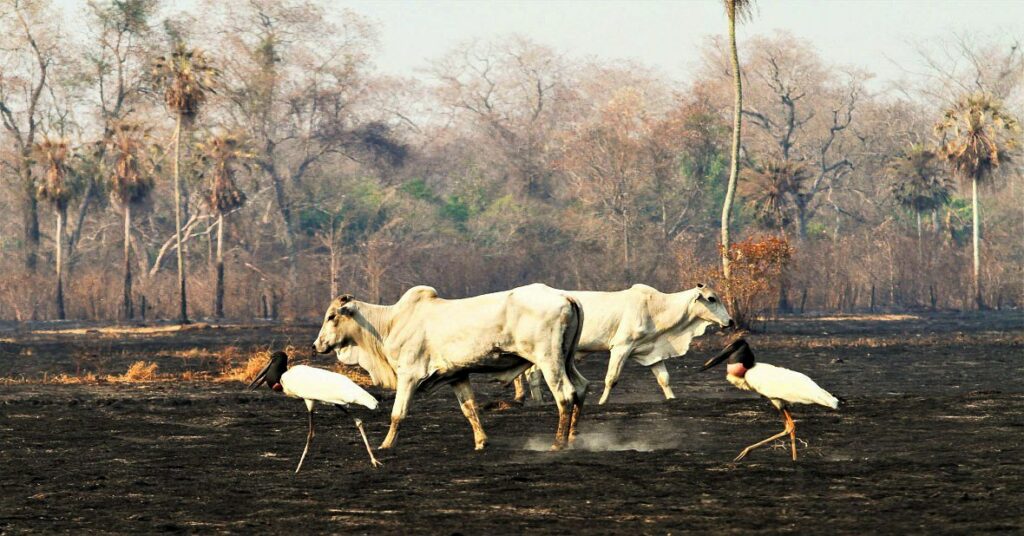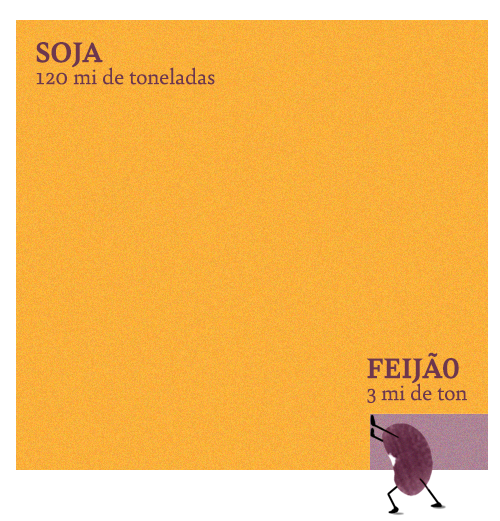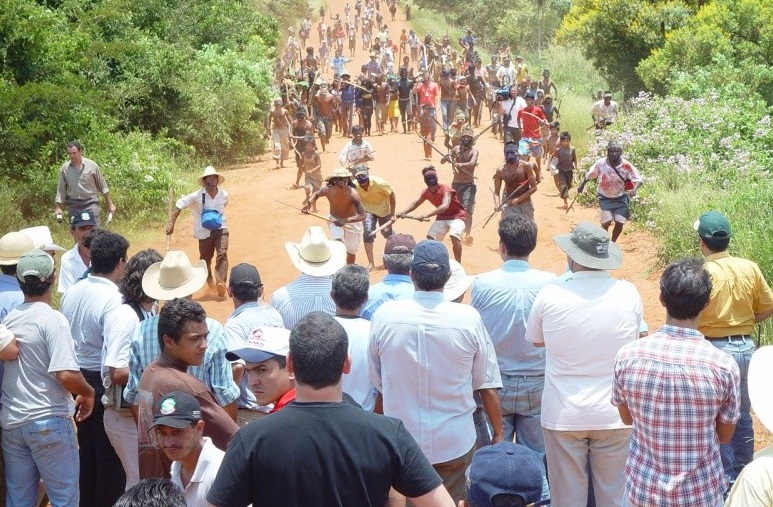for
sophically minded researchers – iIf you ask philosophically minded researchers n the Anglophone world at least – why it is that science works, they will almost always point to the philosopher Karl Popper (1902-94) for vindication. Science, they explain, doesn’t presume to provide the final answer to any question, but contents itself with trying to disprove things. Science, so the Popperians claim, is an implacable machine for destroying falsehoods.
Popper spent his youth in Vienna, among
the liberal intelligentsia. His father was a lawyer and bibliophile, and an
intimate of Sigmund Freud’s sister Rosa Graf. Popper’s early vocations draw him
to music, cabinet making and educational philosophy, but he earned his
doctorate in psychology from the University of Vienna in 1928. Realising that
an academic post abroad offered escape from an increasingly antisemitic Austria
(Popper’s grandparents were all Jewish, though he himself had been baptised
into Lutheranism), he scrambled to write his first book. This was published
as Logik der Forschung (1935), or The Logic of
Scientific Discovery, and in it he put forward his method of falsification.
The process of science, wrote Popper, was to conjecture a hypothesis and then
attempt to falsify it. You must set up an experiment to try to prove your
hypothesis wrong. If it is disproved, you must renounce it. Herein,
said Popper, lies the great distinction between science and pseudoscience: the
latter will try to protect itself from disproof by massaging its theory. But in
science it is all or nothing, do or die.
Karl Popper, 1987. Photo by Süddeutsche
Zeitung/Alamy
Popper warned scientists that, while
experimental testing might get you nearer and nearer to the truth of your
hypothesis via corroboration, you cannot and must not ever proclaim yourself
correct. The logic of induction means that you’ll never collect the infinite
mass of evidence necessary to be certain in all possible cases, so it’s better
to consider the body of scientific knowledge not so much true as
not-yet-disproved, or provisionally true. With his book in hand, Popper
obtained a university position in New Zealand. From afar, he watched the fall
of Austria to Nazism, and commenced work on a more political book, The
Open Society and its Enemies (1945). Shortly after the war, he moved
to the UK, where he remained for the rest of his life.
For all its appealing simplicity,
falsification was quickly demolished by philosophers, who showed that it was an
untenable way of looking at science. In any real experimental set-up, they
pointed out, it’s impossible to isolate a single hypothetical element for
disproof. Yet for decades, Popperianism has nonetheless remained popular among
scientists themselves, in spite of its potentially harmful side-effects. Why
should this be?
It was a group of biologists that gave Popper his
first scientific hearing. They met as the Theoretical Biology Club in the 1930s
and ’40s, at the University of Oxford, at house parties in Surrey, and latterly
in London too. Popper visited them both before and after the war, as they
wrestled with evolutionary theory and with establishing connections between
their different biological specialisms. During the prewar period in particular,
evolutionary biology was – depending on one’s outlook – either excitingly
complex or confusingly jumbled. Neat theories of Mendelian evolution, where
discrete characteristics were inherited on the toss of a chromosomal coin,
competed to explain evolution with arcane statistical descriptions of genetic
qualities, continuously graded across populations. Meanwhile the club’s leading
light, Joseph Henry Woodger, hoped for a philosophically tight way of
clarifying the notoriously flaky biological concept of ‘organicism’. Perhaps
Popper’s clarifying rigour could help to sort it all out.
Photo
supplied by the author
It is a striking fact that Popper’s most
vocal fans came from the biological and field sciences: John Eccles, the
Australian neurophysiologist; Clarence Palmer, the New Zealand meteorologist;
Geoffrey Leeper, an Australian soil scientist. Even Hermann Bondi, an
Austrian-British physical scientist, who operated at the speculative end of
cosmology. In other words, it was the scientists whose work could least easily
be potted in an attempted laboratory disproof – Popper’s method – who turned to
Popper for vindication. This is odd. Presumably, they hoped for some
epistemological heft for their work. To take a wider angle on the mystery, we
might note the ‘physics envy’ sometimes attributed to 20th-century field scientists:
the comparative lack of respect they experienced in both scientific and public
circles. Popper seemed to offer salvation to this particular ill.
We don’t conclude we’ve disproved
well-established laws of physics – rather, that our experiment was faulty
Among the eager philosophical
scientists of the Theoretical Biology Club was a young man named Peter Medawar.
Shortly after the Second World War, Medawar was drafted into a lab researching
tissue transplantation, where he began a Nobel-winning career in the biological
sciences. In his several books for popular audiences, and in his BBC Reith
lectures of 1959, he consistently credited Popper for the success of science,
becoming the most prominent Popperian of all. (In turn, Richard Dawkins
credited Medawar as ‘chief spokesman for “The Scientist” in the modern world’,
and has spoken positively of falsifiability.) In Medawar’s radio lectures,
Popper’s trademark ‘commonsense’ philosophy was very much on display, and he
explained with great clarity how even hypotheses about the genetic future of
mankind could be tested experimentally along Popperian lines. In 1976, Medawar
secured Popper his most prestigious recognition yet: a fellowship, rare among
non-scientists, at the scientific Royal Society of London.
While all this was going on, three
philosophers were pulling the rug away beneath the Popperians’
feet. They argued that, when an experiment fails to prove a
hypothesis, any element of the physical or theoretical set-up could be to
blame. Nor can any single disproof ever count against a theory, since we can
always put in a good-faith auxiliary hypothesis to protect it: perhaps the lab
mice weren’t sufficiently inbred to produce genetic consistency; perhaps the
chemical reaction occurs only in the presence of a particular catalyst.
Moreover, we have to protect some theories for the sake of
getting on at all. Generally, we don’t conclude that we have disproved
well-established laws of physics – rather, that our experiment was faulty. And
yet the Popperians were undaunted. What did they see in him?
The historian Neil Calver argued in 2013 that members of the Royal
Society were swayed less by Popper’s epistemological rules for research than by
his philosophical chic. During the 1960s, they had been pummelled by the ‘two
cultures’ debate that cast them as jumped-up technicians in comparison with the
esteemed makers of high culture. Philosophy was a good cultural weapon with
which to respond, since it demonstrated affinity with the arts. In particular,
Popper’s account of what came before falsification in research
was a good defence of the ‘cultural’ qualities of science. He described this
stage as ‘conjecture’, an act of imagination. Medawar and others made great
play of this scientific creativity in order to sustain cultural kudos for their
field. Their Popper was not the Popper of falsification at all, but another
Popper of wishful interpretation.
Although important to its participants,
the two cultures debate was a storm in an institutional
teacup. During the 1950s and ’60s, when Popper’s Logik der Forschung was
available in English (The Logic of Scientific Discovery, 1959), clouds
were gathering that threatened to flood out more than the chinaware of the
Royal Society. In the public mind, the scientist was becoming a dangerous
figure, the bogeyman responsible for the atomic bomb. Stanley Kubrick’s Dr
Strangelove (1964), played in so memorably deranged a fashion by Peter
Sellers, was the embodiment of the type. Strangelove struck at the heart of
Popperian ideals, an unreconstructed Nazi operating at the military-industrial
nerve-centre of the ‘free world’. As such, he reflected the real-life stories
of Nazi war criminals imported by Operation Paperclip to the US to assist in
the Cold War effort – a whitewashing project uncovered as early as 1951
by The Boston Globe. Against such a backdrop, the
epistemic modesty of Popperian science was appealing indeed. Real scientists,
in the Popperian mode, abjured all politics, all truths. They didn’t attempt to
know the atom, still less to win wars. They merely attempted to disprove
things. As Medawar put it in The Hope of Progress (1972):
The Wicked Scientist
is not to be taken seriously … There are, however, plenty of wicked
philosophers, wicked priests and wicked politicians.
Falsification was a recipe to proclaim
personal modesty as well. In an interview in 2017 for the Oral History of
British Science project, the crystallographer John Helliwell rejected, with
some embarrassment, the notion that he might have been responsible for any
revolutionary ‘paradigm shift’ in science (the coinage of Popper’s
contemporary, Thomas Kuhn), when he pioneered a new method for visualising
proteins and viruses, reaching instead for the humble method of falsification
to describe his work.
It was, and remains, intellectually
shortsighted to disconnect science and ethics in this way
One person’s modesty, however, can be
another person’s denial of responsibility. A darker way of rendering the Popper
vs Strangelove story is to say that falsification offers moral
non-accountability to its adherents. A scientist can never be accused of supporting
the wrong cause if their work is not about confirmation. Popper himself declared that science is an essentially
theoretical business. Yet it was a naïve scientist working during the Cold War
who didn’t realise the significance of their funding source and the
implications of their research. Medawar, for example, knew full well that his
own field of immunology sprang directly from attempts at skin grafting and transplantation
on wounded victims of the Second World War. Moreover, he was perfectly aware of
the high body-count involved in its experiments (including the use of
guillotined criminals in France) – by no means unethical in all cases,
but certainly far from theoretical.
Microscopic
slides showing the development of grafted tissue, from an early paper by Peter
Medawar. Courtesy the Wellcome Library
The Popperian get-out clause was
deployed in that most controversial of 20th-century sciences, eugenics. Medawar
didn’t hesitate to deploy the supposed moral non-accountability of science in
defending eugenics, the topic that furnished the basis of his BBC lectures and
much that followed. His argument was a subtle one, separating the science of
eugenics into two types. ‘Positive’ eugenics – the creation of a perfect race –
he characterised as bad because it was (a) Nazi, and (b) an unfalsifiable
scientific goal – un-Popperian on two counts. This left the field clear for
Medawar to lend his support to ‘negative’ eugenics, the deliberate prevention
of conception by carriers of certain genetic conditions. This, claimed Medawar,
was a strictly scientific (that is, Popperian) question, and didn’t touch upon
matters of ethics. It was something of an invidious argument.
With Popperian impatience over
so-called mere semantics, Medawar brushed away worries that the eugenic word
‘fitness’ implied a judgment about who was ‘fit’ or not to be a part of
society. Rather, Medawar claimed, it was a mere tag of convenience for an idea
that had perfect clarity among evolutionary biologists. Ordinary people
shouldn’t worry themselves about its implications; the important thing was that
scientists had it straight in their minds. Science merely provided the facts;
it was for the potential parent to decide. On one level, this sounds innocuous
– and Medawar was by no means a bad person. But it was, and remains,
intellectually shortsighted to disconnect science and ethics in this way. To
suppose a situation in which a potential parent will exercise a perfect and
unencumbered liberal choice lends unwarranted impartiality to the scientific
facts. In reality, economics or politics might force that parent’s hand. A more
extreme example makes the case clear: if a scientist explains nuclear
technology to a bellicose despot, but leaves the ethical choice of deployment
to the despot, we wouldn’t say that the scientist had acted responsibly.
As he prepared his lectures on the ‘future of man’, Medawar
speculated that biological ‘fitness’ was in fact best understood as an economic
phenomenon:
[I]t is, in effect, a
system of pricing the endowment of organisms in the currency
of offspring: ie, in terms of net reproductive performance.
Making such a connection – between the
hidden hand of nature and the apparently impartial decisions of the market –
was a hot way to read Popper. His greatest fans outside the scientific
community were, in fact, economists. At the London School of Economics, Popper
was close to the neoliberal theorist Friedrich Hayek. He also taught the
soon-to-be billionaire George Soros, who named his Open Society Foundations
(formerly, the Open Society Institute) after Popper’s most famous book. Along
with Hayek and several others, Popper founded the Mont Pelerin Society,
promoting marketisation and privatisation around the world.
Popper’s appointment to a fellowship at the Royal
Society marked the demise of a powerful strand of socialist leadership in
British science that had begun in the 1930s with the cadre of talented and
public-facing researchers (J D Bernal, J B S Haldane and others)
whom the historian Gary Werskey in 1978 dubbed ‘the visible college’. Indeed,
Popper had encountered many of them during his prewar visits to the Theoretical
Biology Club. While they were sharpening their complex science against the edge
of Popper’s philosophy, he might well have been whetting his anti-Marxist
inclinations against their socialised vision of science – even, perhaps, their
personalities. What Popper did in The Open Society was take
the biologists’ politicising of science and attach it to antifascism. Science
and politics were connected, but not in the way that the socialists claimed.
Rather, science was a special example of the general liberal virtues that can
be cultivated only in the absence of tyranny.
After the war, the commitment of
visible-college scientists to nation-building saw them involved in many areas
of governmental, educational and public life. The Popperians hated them.
In The Road to Serfdom (1944), Hayek warned that they were
‘totalitarians in our midst’, plotting to create a Marxist regime. They should
leave well alone, he argued, and accept that their lab work bore no connection
to social questions. Hayek’s bracketing off of governance was no more plausible
in science than it was in economics. The greatest myth of neoliberalism is that
it represents a neutral political perspective – a commitment to non-meddling –
when in fact it must be sustained through aggressive pro-business propaganda
and the suppression of organised labour. So, while Soros’s social activism has
done much good in the world, it has been funded through economic activity that
depends upon a systematic repression of debate and of human beings for its
success. Having a philosophical cover-story for this kind of neoliberalism,
that likens it to (Popperian) science, does it no harm at all.
In thinking and writing about Popper,
one becomes very conscious of antisemitism. Popper fled Nazi hatred in 1930s
Austria; today, Soros is the victim of antisemitic slurs that would be
ridiculous were it not for the history and the real threat of continued
violence in which they are rooted. We do well to remember the biographical
reasons that Popper had for advancing an open society, and for trying to redeem
science from the sins committed by Nazi researchers. The sly elision of fascist
and socialist science as the opponent to Popperianism – sometimes deliberate,
sometimes unconscious – is a move for which it’s more difficult to find
sympathy.
It doesn’t take much time online to
find examples of Popperianism wielded by climate change deniers
Science is profoundly altered when
considered analogous to the open market. The notion that scientific theories
vie with one another in open competition overlooks the fact that research
ambitions and funding choices are shaped by both big-p and small-p politics.
There is a reason why more scientific progress has been made in drugs for the
treatment of diseases of wealth than of poverty. Moreover, career success in
science – which shapes future research agendas when a person becomes a leader
in their field – is a matter profoundly inflected by gender, race, class and
dis/ability.
Scientists
refused Popper’s distinction between science and ethics in Science for
the People (this issue from 1974). Courtesy the Wellcome
Library
Some unscrupulous researchers even used
a Popperian frame to become, precisely, the ‘wicked scientists’ whose existence
Medawar denied. As the historians Naomi Oreskes and Erik Conway describe in Merchants of Doubt (2010),
scientists in the US and the UK were co-opted as lobbyists for tobacco
companies during the late-20th century to cast doubt upon research that
revealed a link between smoking and cancer. No such link could be proved, in
Popperian terms; and that room for doubt was ruthlessly exploited by the
scientists’ paymasters. Many of the same scientists went on to work for fossil
fuel lobbyists, casting doubt on the science of anthropogenic climate change.
It doesn’t take much time on a search engine to find examples of Popperianism
wielded by deniers. In a YouTube video from 2019, the Clear Energy Alliance
(which DeSmog Blog lists as funded by oil interests) called upon the ‘legendary
scientific philosopher Karl Popper’. The group’s central claim is that: ‘In
order to know if a theory could be true, there must be a way to prove it to be
false. Unfortunately, many climate change scientists, the media and activists
are ignoring this cornerstone of science.’ At the same time, academics at
recognised universities write scholarly sounding papers for the libertarian,
neoliberal and sceptic Cato Institute arguing that ‘Popper’s evolutionary
epistemology captures … the essence of science, but the conduct of climate
science today is a far cry from [it]’. Such writers typically hail from the
fields of economics and policy rather than science; untroubled by the critique
of scientists, Popper’s contested and outdated account of science suits them
perfectly.
While Hayek et al held the smoking gun
of Popperian mischief, there were well-intentioned reasons for sticking with a
simple model of sceptical science. Not least that it dovetailed with the
meritocratic narrative of postwar science: the notion that science, more than
any other discipline, suited the upwardly mobile working and middle classes. It
takes a particular kind of education and upbringing to see the aesthetics of
completion, or grasp the mathematics of proof, but any smart kid can poke holes
in something. If that’s what science is, then it’s open to anyone, no matter
their social class. This was the meritocratic dream of educationalists in the
1950s: Britain would, in mutually supportive vein, be culturally modern and
intellectually scientific.
That dream backfired. The notion that
science is all about falsification has done incalculable damage not just to
science but to human wellbeing. It has normalised distrust as the default
condition for knowledge-making, while setting an unreachable and unrealistic
standard for the scientific enterprise. Climate sceptics demand precise
predictions of an impossible kind, yet seize upon a single anomalous piece of
data to claim to have disproved the entire edifice of combined
research; anti-vaxxers exploit the impossibility of any ultimate
proof of safety to fuel their destructive activism. In this sense,
sophically minded
researchers – in the Anglophone world at least – why it is that science works,
they will almost always point to the philosopher Karl Popper (1902-94) for
vindication. Science, they explain, doesn’t presume to provide the final answer
to any question, but contents itself with trying to disprove things.
Science, so the Popperians claim, is an implacable machine for destroying falsehoods.
Popper spent his youth in Vienna, among
the liberal intelligentsia. His father was a lawyer and bibliophile, and an
intimate of Sigmund Freud’s sister Rosa Graf. Popper’s early vocations draw him
to music, cabinet making and educational philosophy, but he earned his
doctorate in psychology from the University of Vienna in 1928. Realising that
an academic post abroad offered escape from an increasingly antisemitic Austria
(Popper’s grandparents were all Jewish, though he himself had been baptised into
Lutheranism), he scrambled to write his first book. This was published as Logik
der Forschung (1935), or The Logic of Scientific Discovery,
and in it he put forward his method of falsification. The process of science,
wrote Popper, was to conjecture a hypothesis and then attempt to falsify it.
You must set up an experiment to try to prove your hypothesis wrong.
If it is disproved, you must renounce it. Herein, said Popper, lies the great
distinction between science and pseudoscience: the latter will try to protect
itself from disproof by massaging its theory. But in science it is all or
nothing, do or die.
Karl
Popper, 1987. Photo by Süddeutsche Zeitung/Alamy
Popper warned scientists that, while
experimental testing might get you nearer and nearer to the truth of your
hypothesis via corroboration, you cannot and must not ever proclaim yourself
correct. The logic of induction means that you’ll never collect the infinite
mass of evidence necessary to be certain in all possible cases, so it’s better
to consider the body of scientific knowledge not so much true as
not-yet-disproved, or provisionally true. With his book in hand, Popper
obtained a university position in New Zealand. From afar, he watched the fall
of Austria to Nazism, and commenced work on a more political book, The
Open Society and its Enemies (1945). Shortly after the war, he moved
to the UK, where he remained for the rest of his life.
For all its appealing simplicity,
falsification was quickly demolished by philosophers, who showed that it was an
untenable way of looking at science. In any real experimental set-up, they
pointed out, it’s impossible to isolate a single hypothetical element for disproof.
Yet for decades, Popperianism has nonetheless remained popular among scientists
themselves, in spite of its potentially harmful side-effects. Why should this
be?
It was a group of biologists that gave Popper his
first scientific hearing. They met as the Theoretical Biology Club in the 1930s
and ’40s, at the University of Oxford, at house parties in Surrey, and latterly
in London too. Popper visited them both before and after the war, as they
wrestled with evolutionary theory and with establishing connections between
their different biological specialisms. During the prewar period in particular,
evolutionary biology was – depending on one’s outlook – either excitingly
complex or confusingly jumbled. Neat theories of Mendelian evolution, where
discrete characteristics were inherited on the toss of a chromosomal coin,
competed to explain evolution with arcane statistical descriptions of genetic
qualities, continuously graded across populations. Meanwhile the club’s leading
light, Joseph Henry Woodger, hoped for a philosophically tight way of
clarifying the notoriously flaky biological concept of ‘organicism’. Perhaps
Popper’s clarifying rigour could help to sort it all out.
Photo
supplied by the author
It is a striking fact that Popper’s
most vocal fans came from the biological and field sciences: John Eccles, the
Australian neurophysiologist; Clarence Palmer, the New Zealand meteorologist;
Geoffrey Leeper, an Australian soil scientist. Even Hermann Bondi, an
Austrian-British physical scientist, who operated at the speculative end of
cosmology. In other words, it was the scientists whose work could least easily
be potted in an attempted laboratory disproof – Popper’s method – who turned to
Popper for vindication. This is odd. Presumably, they hoped for some
epistemological heft for their work. To take a wider angle on the mystery, we
might note the ‘physics envy’ sometimes attributed to 20th-century field scientists:
the comparative lack of respect they experienced in both scientific and public
circles. Popper seemed to offer salvation to this particular ill.
We don’t conclude we’ve disproved
well-established laws of physics – rather, that our experiment was faulty
Among the eager philosophical
scientists of the Theoretical Biology Club was a young man named Peter Medawar.
Shortly after the Second World War, Medawar was drafted into a lab researching
tissue transplantation, where he began a Nobel-winning career in the biological
sciences. In his several books for popular audiences, and in his BBC Reith
lectures of 1959, he consistently credited Popper for the success of science,
becoming the most prominent Popperian of all. (In turn, Richard Dawkins
credited Medawar as ‘chief spokesman for “The Scientist” in the modern world’,
and has spoken positively of falsifiability.) In Medawar’s radio lectures,
Popper’s trademark ‘commonsense’ philosophy was very much on display, and he
explained with great clarity how even hypotheses about the genetic future of
mankind could be tested experimentally along Popperian lines. In 1976, Medawar
secured Popper his most prestigious recognition yet: a fellowship, rare among
non-scientists, at the scientific Royal Society of London.
While all this was going on, three
philosophers were pulling the rug away beneath the Popperians’
feet. They argued that, when an experiment fails to prove a
hypothesis, any element of the physical or theoretical set-up could be to
blame. Nor can any single disproof ever count against a theory, since we can
always put in a good-faith auxiliary hypothesis to protect it: perhaps the lab
mice weren’t sufficiently inbred to produce genetic consistency; perhaps the
chemical reaction occurs only in the presence of a particular catalyst.
Moreover, we have to protect some theories for the sake of
getting on at all. Generally, we don’t conclude that we have disproved
well-established laws of physics – rather, that our experiment was faulty. And
yet the Popperians were undaunted. What did they see in him?
The historian Neil Calver argued in 2013 that members of the Royal
Society were swayed less by Popper’s epistemological rules for research than by
his philosophical chic. During the 1960s, they had been pummelled by the ‘two
cultures’ debate that cast them as jumped-up technicians in comparison with the
esteemed makers of high culture. Philosophy was a good cultural weapon with
which to respond, since it demonstrated affinity with the arts. In particular,
Popper’s account of what came before falsification in research
was a good defence of the ‘cultural’ qualities of science. He described this
stage as ‘conjecture’, an act of imagination. Medawar and others made great
play of this scientific creativity in order to sustain cultural kudos for their
field. Their Popper was not the Popper of falsification at all, but another
Popper of wishful interpretation.
Although important to its participants,
the two cultures debate was a storm in an institutional
teacup. During the 1950s and ’60s, when Popper’s Logik der Forschung was
available in English (The Logic of Scientific Discovery, 1959), clouds
were gathering that threatened to flood out more than the chinaware of the
Royal Society. In the public mind, the scientist was becoming a dangerous
figure, the bogeyman responsible for the atomic bomb. Stanley Kubrick’s Dr
Strangelove (1964), played in so memorably deranged a fashion by Peter
Sellers, was the embodiment of the type. Strangelove struck at the heart of
Popperian ideals, an unreconstructed Nazi operating at the military-industrial
nerve-centre of the ‘free world’. As such, he reflected the real-life stories
of Nazi war criminals imported by Operation Paperclip to the US to assist in
the Cold War effort – a whitewashing project uncovered as early as 1951
by The Boston Globe. Against such a backdrop, the
epistemic modesty of Popperian science was appealing indeed. Real scientists,
in the Popperian mode, abjured all politics, all truths. They didn’t attempt to
know the atom, still less to win wars. They merely attempted to disprove
things. As Medawar put it in The Hope of Progress (1972):
The Wicked Scientist
is not to be taken seriously … There are, however, plenty of wicked
philosophers, wicked priests and wicked politicians.
Falsification was a recipe to proclaim
personal modesty as well. In an interview in 2017 for the Oral History of
British Science project, the crystallographer John Helliwell rejected, with
some embarrassment, the notion that he might have been responsible for any
revolutionary ‘paradigm shift’ in science (the coinage of Popper’s
contemporary, Thomas Kuhn), when he pioneered a new method for visualising proteins
and viruses, reaching instead for the humble method of falsification to
describe his work.
It was, and remains, intellectually
shortsighted to disconnect science and ethics in this way
One person’s modesty, however, can be
another person’s denial of responsibility. A darker way of rendering the Popper
vs Strangelove story is to say that falsification offers moral
non-accountability to its adherents. A scientist can never be accused of
supporting the wrong cause if their work is not about confirmation. Popper
himself declared that science is an essentially
theoretical business. Yet it was a naïve scientist working during the Cold War
who didn’t realise the significance of their funding source and the
implications of their research. Medawar, for example, knew full well that his
own field of immunology sprang directly from attempts at skin grafting and
transplantation on wounded victims of the Second World War. Moreover, he was
perfectly aware of the high body-count involved in its experiments (including
the use of guillotined criminals in France) – by no means unethical in all
cases, but certainly far from theoretical.
Microscopic
slides showing the development of grafted tissue, from an early paper by Peter
Medawar. Courtesy the Wellcome Library
The Popperian get-out clause was
deployed in that most controversial of 20th-century sciences, eugenics. Medawar
didn’t hesitate to deploy the supposed moral non-accountability of science in
defending eugenics, the topic that furnished the basis of his BBC lectures and
much that followed. His argument was a subtle one, separating the science of eugenics
into two types. ‘Positive’ eugenics – the creation of a perfect race – he
characterised as bad because it was (a) Nazi, and (b) an unfalsifiable
scientific goal – un-Popperian on two counts. This left the field clear for
Medawar to lend his support to ‘negative’ eugenics, the deliberate prevention
of conception by carriers of certain genetic conditions. This, claimed Medawar,
was a strictly scientific (that is, Popperian) question, and didn’t touch upon
matters of ethics. It was something of an invidious argument.
With Popperian impatience over
so-called mere semantics, Medawar brushed away worries that the eugenic word
‘fitness’ implied a judgment about who was ‘fit’ or not to be a part of
society. Rather, Medawar claimed, it was a mere tag of convenience for an idea
that had perfect clarity among evolutionary biologists. Ordinary people
shouldn’t worry themselves about its implications; the important thing was that
scientists had it straight in their minds. Science merely provided the facts;
it was for the potential parent to decide. On one level, this sounds innocuous
– and Medawar was by no means a bad person. But it was, and remains,
intellectually shortsighted to disconnect science and ethics in this way. To
suppose a situation in which a potential parent will exercise a perfect and
unencumbered liberal choice lends unwarranted impartiality to the scientific
facts. In reality, economics or politics might force that parent’s hand. A more
extreme example makes the case clear: if a scientist explains nuclear
technology to a bellicose despot, but leaves the ethical choice of deployment
to the despot, we wouldn’t say that the scientist had acted responsibly.
As he prepared his lectures on the ‘future of man’, Medawar
speculated that biological ‘fitness’ was in fact best understood as an economic
phenomenon:
[I]t is, in effect, a
system of pricing the endowment of organisms in the currency
of offspring: ie, in terms of net reproductive performance.
Making such a connection – between the
hidden hand of nature and the apparently impartial decisions of the market –
was a hot way to read Popper. His greatest fans outside the scientific
community were, in fact, economists. At the London School of Economics, Popper
was close to the neoliberal theorist Friedrich Hayek. He also taught the
soon-to-be billionaire George Soros, who named his Open Society Foundations
(formerly, the Open Society Institute) after Popper’s most famous book. Along
with Hayek and several others, Popper founded the Mont Pelerin Society,
promoting marketisation and privatisation around the world.
Popper’s appointment to a fellowship at the Royal
Society marked the demise of a powerful strand of socialist leadership in
British science that had begun in the 1930s with the cadre of talented and
public-facing researchers (J D Bernal, J B S Haldane and others)
whom the historian Gary Werskey in 1978 dubbed ‘the visible college’. Indeed,
Popper had encountered many of them during his prewar visits to the Theoretical
Biology Club. While they were sharpening their complex science against the edge
of Popper’s philosophy, he might well have been whetting his anti-Marxist
inclinations against their socialised vision of science – even, perhaps, their
personalities. What Popper did in The Open Society was take
the biologists’ politicising of science and attach it to antifascism. Science
and politics were connected, but not in the way that the socialists claimed.
Rather, science was a special example of the general liberal virtues that can
be cultivated only in the absence of tyranny.
After the war, the commitment of
visible-college scientists to nation-building saw them involved in many areas
of governmental, educational and public life. The Popperians hated them.
In The Road to Serfdom (1944), Hayek warned that they were
‘totalitarians in our midst’, plotting to create a Marxist regime. They should
leave well alone, he argued, and accept that their lab work bore no connection
to social questions. Hayek’s bracketing off of governance was no more plausible
in science than it was in economics. The greatest myth of neoliberalism is that
it represents a neutral political perspective – a commitment to non-meddling –
when in fact it must be sustained through aggressive pro-business propaganda
and the suppression of organised labour. So, while Soros’s social activism has
done much good in the world, it has been funded through economic activity that
depends upon a systematic repression of debate and of human beings for its
success. Having a philosophical cover-story for this kind of neoliberalism,
that likens it to (Popperian) science, does it no harm at all.
In thinking and writing about Popper,
one becomes very conscious of antisemitism. Popper fled Nazi hatred in 1930s
Austria; today, Soros is the victim of antisemitic slurs that would be
ridiculous were it not for the history and the real threat of continued
violence in which they are rooted. We do well to remember the biographical
reasons that Popper had for advancing an open society, and for trying to redeem
science from the sins committed by Nazi researchers. The sly elision of fascist
and socialist science as the opponent to Popperianism – sometimes deliberate,
sometimes unconscious – is a move for which it’s more difficult to find
sympathy.
It doesn’t take much time online to
find examples of Popperianism wielded by climate change deniers
Science is profoundly altered when
considered analogous to the open market. The notion that scientific theories
vie with one another in open competition overlooks the fact that research
ambitions and funding choices are shaped by both big-p and small-p politics.
There is a reason why more scientific progress has been made in drugs for the treatment
of diseases of wealth than of poverty. Moreover, career success in science –
which shapes future research agendas when a person becomes a leader in their
field – is a matter profoundly inflected by gender, race, class and
dis/ability.
Scientists
refused Popper’s distinction between science and ethics in Science for
the People (this issue from 1974). Courtesy the Wellcome
Library
Some unscrupulous researchers even used
a Popperian frame to become, precisely, the ‘wicked scientists’ whose existence
Medawar denied. As the historians Naomi Oreskes and Erik Conway describe in Merchants of Doubt (2010),
scientists in the US and the UK were co-opted as lobbyists for tobacco
companies during the late-20th century to cast doubt upon research that
revealed a link between smoking and cancer. No such link could be proved, in
Popperian terms; and that room for doubt was ruthlessly exploited by the
scientists’ paymasters. Many of the same scientists went on to work for fossil
fuel lobbyists, casting doubt on the science of anthropogenic climate change. It
doesn’t take much time on a search engine to find examples of Popperianism
wielded by deniers. In a YouTube video from 2019, the Clear Energy Alliance
(which DeSmog Blog lists as funded by oil interests) called upon the ‘legendary
scientific philosopher Karl Popper’. The group’s central claim is that: ‘In
order to know if a theory could be true, there must be a way to prove it to be
false. Unfortunately, many climate change scientists, the media and activists
are ignoring this cornerstone of science.’ At the same time, academics at
recognised universities write scholarly sounding papers for the libertarian,
neoliberal and sceptic Cato Institute arguing that ‘Popper’s evolutionary
epistemology captures … the essence of science, but the conduct of climate science
today is a far cry from [it]’. Such writers typically hail from the fields of
economics and policy rather than science; untroubled by the critique of
scientists, Popper’s contested and outdated account of science suits them
perfectly.
While Hayek et al held the smoking gun
of Popperian mischief, there were well-intentioned reasons for sticking with a
simple model of sceptical science. Not least that it dovetailed with the
meritocratic narrative of postwar science: the notion that science, more than any
other discipline, suited the upwardly mobile working and middle classes. It
takes a particular kind of education and upbringing to see the aesthetics of
completion, or grasp the mathematics of proof, but any smart kid can poke holes
in something. If that’s what science is, then it’s open to anyone, no matter
their social class. This was the meritocratic dream of educationalists in the
1950s: Britain would, in mutually supportive vein, be culturally modern and
intellectually scientific.
That dream backfired. The notion that
science is all about falsification has done incalculable damage not just to
science but to human wellbeing. It has normalised distrust as the default
condition for knowledge-making, while setting an unreachable and unrealistic
standard for the scientific enterprise. Climate sceptics demand precise
predictions of an impossible kind, yet seize upon a single anomalous piece of
data to claim to have disproved the entire edifice of combined
research; anti-vaxxers exploit the impossibility of any ultimate
proof of safety to fuel their destructive activism. In this sense,
Kirsten Thompson, the lead scientist on the











